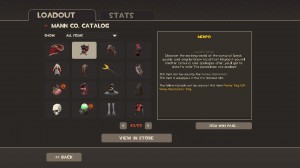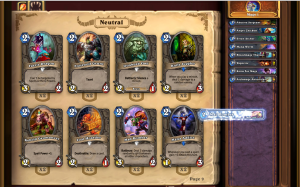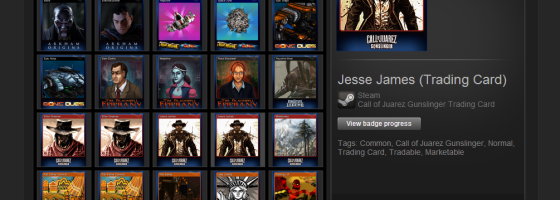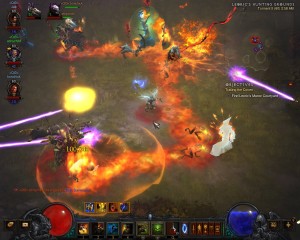One element that has become a norm for each seasonal Steam Sale has been the contest around unique trading cards exclusive to the event. This is where people can make decent money selling these otherwise useless items. As the industry is becoming more digitally oriented, this raises the point on today’s debate: Do digital items actually have value to them?
Intrinsic vs. Extrinsic:
To start this debate we need to first examine the concept of intrinsic vs. extrinsic value. Intrinsic value refers to an object’s value without any outside forces impacting it. Extrinsic value is the value that an object has where those outside factors are affecting it.
When we talk about products in any consumer industry, the intrinsic value is what the manufacturer assigns to the product based on the work that went into it, the cost of the materials and what they are hoping to get out of it. While the extrinsic value is what the market decides based on rarity and other factors.
For instance, certain cars are worth more in different parts of the world based on the overall rarity of that type of car. The value of the car and its parts didn’t change whether it’s in one place or the other, but the market for those areas affected the price.
Bringing this back to the Game Industry and digital items is where things get a bit grey. The problem is that digital items like digital games are still being debated as to whether or not the consumer actually owns them or not. In the US for instance, digital items are not owned by the consumer and we merely have the license to use them.

Team Fortress has evolved from having digital items to having an entire economy marketplace associated with it.
What that means is digital items may have the intrinsic value from a developer selling them, but they don’t necessarily have extrinsic value no matter what the consumer says.
Digital items aren’t physical products and don’t have a shelf life or true rarity. Someone can just decide one day to tell the computer to generate 1,000 copies of the rarest item in the game like it was nothing. And because we are dealing with digital distribution, there is no such thing as having a drought of rare items in one part of the world (unless that is an explicit part of the game mechanics.)
But there is currently one exception to this that I’m sure you know what I’m going to talk about.
The Steam Marketplace:
One of the major benefits of Steam has been the ability to unify games, content and consumers together. This is how trading cards and the marketplace have exploded in popularity. Someone can take content from one game and sell it to someone else and that money can then be used on anything within the Steam platform.
While Valve does receive a cut of the profits from each transaction, this is clearly an example of the consumer assigning extrinsic value to a digital item. The value of these items is very much up in the air as it’s hard to actually gauge what an item is worth. If you’ve listened to previous podcasts then you know that both Ken and Lorson have made serious money selling TF2 items on the marketplace.
Items were found through playing the game, so the intrinsic value was very low. Yet because the items were rare by the game’s standards, they have very high extrinsic value. The TF 2 Mac ear buds for instance are still considered incredibility valuable due to this rarity. The problem though with using items without any intrinsic value is that it means there is no idea of a stable market as no one knows what any of these items are really worth.

Despite having value from the purchase, most digital items are locked to their respective games without having extrinsic value.
Case in point would be the craziness of the Diablo 3 auction house and how you had some people make hundreds of dollars on it and others not so much.
This makes the market very fickle as there were no guidelines. What’s interesting is that with TF 2, the consumers have attempted to create a set of standards by using rare items as a benchmark.
But while the Steam Marketplace is an example of digital items having extrinsic value, there is one major problem with such a marketplace.
Not so Free Market:
The thing you have to realize is that the Steam Marketplace is not a true example of consumer’s controlling a value of an item because at the end of the day, the items are still locked to Steam’s service and they decide what items can be sold.
As we mentioned Valve still receives a cut of everything that’s sold so the marketplace is not an example of a third party system. The idea of having a third party handle sales of digital items has been going on since the 90s, with many sites allowing you to buy Diablo 2 items and other goods outside of the developer’s intent.
These places were frowned upon as developers felt that they were cheating the system and of course they weren’t receiving any profit for it.
Again, this brings up the issue of the first sale doctrine but even that has some issues here.
Does first sale carry over to digital items earned through play or just the initial purchase? And when we talk about F2P items where there was no initial purchase, things get even muddier.
I had a former friend for instance who made a killing off of selling Diablo 2 items until Blizzard up and banned his battle.net ID. Which he then promptly bought a new copy and started a new account to keep going. Now this was in the early 00s, long before digital distribution was even a thing for gamers. But could we ever have a third party market for digital items?
As it stands, the designer still has control over whether or not there is a market for these items which is a huge contrast to other consumer industries. Until the final determination of whether or not digital items are actual goods or just licenses is settled, this debate is going to continue.
Digital distribution is still in its infancy when it comes to the game industry. My gut feeling is that the rules about digital content will be straighten out by the end of the decade, but how that’s going to happen, I have no idea.



